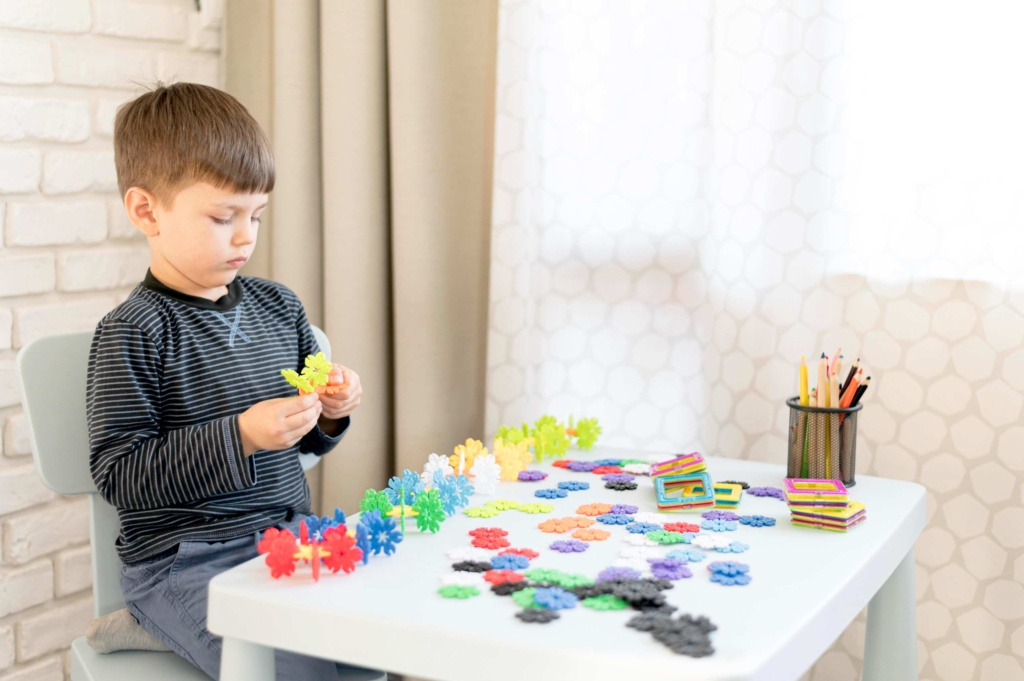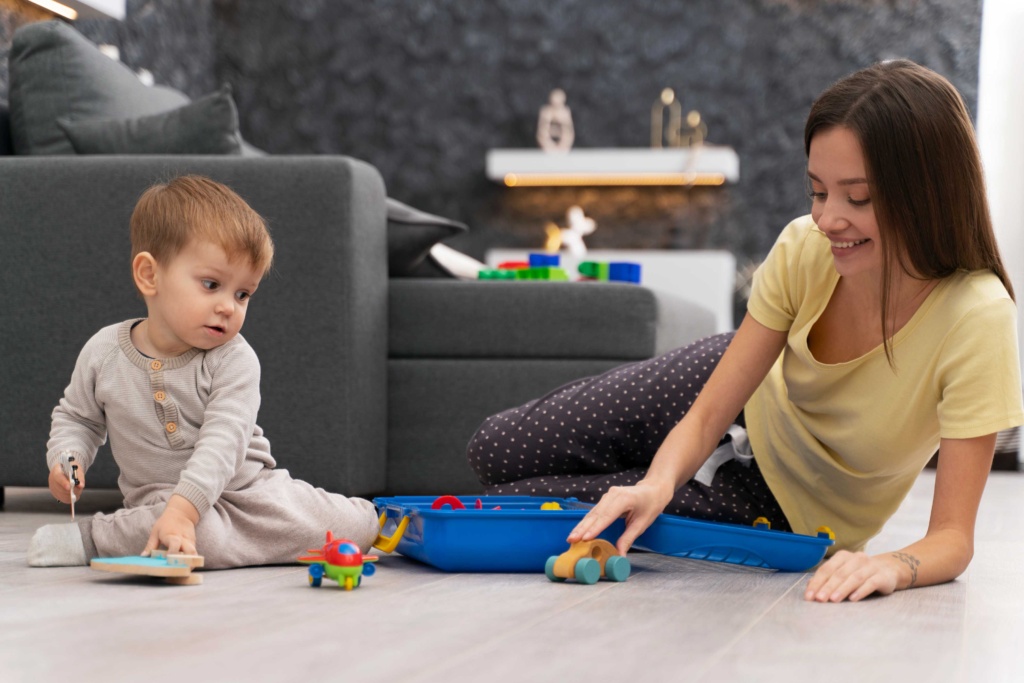
Unveiling the Extraordinary: Autism’s Special Talents and Unique Abilities
Autism, a neurodevelopmental disorder that affects an individual's social interaction and communication skills, has long been surrounded by misco....
Read More
Autism spectrum disorder (ASD) manifests in diverse ways, and incorporating exercises tailored to the unique needs of autistic children is essential for their overall well-being.
In this comprehensive guide, we explore 10 important exercises designed to enhance physical, sensory, and cognitive development in autistic kids. From sensory exercises to breathing techniques, these activities not only contribute to physical health but also provide a structured outlet for sensory processing and emotional regulation.
Yoga emerges as a powerful tool for sensory integration in autistic kids, fostering physical and emotional well-being. Tailored yoga programs designed specifically for their unique needs focus on gentle movements, calming breathing techniques, and mindful practices. The structured nature of yoga provides a sensory-rich environment, promoting balance, flexibility, and coordination.
Through these sessions, autistic children not only enhance their motor skills but also experience a sense of calmness and improved self-regulation. The rhythmic and predictable nature of yoga becomes a therapeutic outlet, contributing to the overall sensory integration process crucial for the holistic development of children on the autism spectrum.
Swimming stands out as a sensory-rich activity offering numerous benefits for autistic kids. The water's buoyancy and resistance provide a unique sensory experience, aiding in sensory integration. Adaptive swim programs catered to the needs of autistic children offer a safe and enjoyable environment, fostering physical and sensory development.
Beyond the physical benefits, swimming becomes a therapeutic outlet, contributing to emotional regulation. The calming effects of water, coupled with the rhythmic movements, create a supportive space for sensory input. Swimming becomes not just an exercise but a holistic sensory experience that positively impacts the overall well-being of autistic kids.
Balancing and coordination exercises play a crucial role in supporting the motor skills development of autistic kids. Simple activities, such as walking on a balance beam or playing catch with a soft ball, engage multiple muscle groups. These exercises enhance spatial awareness and coordination, contributing to improved motor planning.
By incorporating balancing challenges into daily routines, autistic children not only refine their physical abilities but also strengthen cognitive functions. These structured activities provide a foundation for better coordination and motor control, fostering a sense of accomplishment and self-confidence in the developmental journey of children on the autism spectrum.
Therapeutic horseback riding emerges as a transformative sensory experience for autistic kids. The rhythmic motion of the horse provides valuable sensory input, promoting balance, coordination, and emotional regulation. Beyond the physical benefits, the unique bond between the child and the horse fosters a sense of connection and trust.
Equine therapy, including therapeutic horseback riding, has shown positive effects on motor skills and social interactions in children with autism. This holistic approach not only supports physical development but also nurtures emotional well-being, making it a therapeutic and empowering activity for children on the autism spectrum.
Breathing exercises serve as invaluable tools for calming and emotional regulation in autistic kids. Simple techniques like belly breathing or using visual aids for deep breathing provide structured ways to manage stress and anxiety. These exercises empower children to develop self-regulation skills, offering a sense of control over their emotions.
By incorporating breathing exercises into daily routines, autistic kids gain valuable tools for navigating the sensory and emotional challenges they may encounter, fostering a calming environment that contributes to their overall well-being and improved ability to handle daily stressors.
Obstacle courses become dynamic arenas for enhancing motor planning skills in autistic kids. Navigating through these structured challenges, such as crawling under tables or stepping over cushions, sharpens spatial awareness and coordination. The deliberate design of obstacle courses encourages problem-solving, fostering cognitive flexibility.
These activities not only engage multiple senses but also provide a playful yet purposeful approach to refining motor skills. By incorporating obstacle courses into routines, autistic children not only enjoy a fun and interactive experience but also embark on a journey that contributes to improved motor planning and overall physical development.
Sensory play with textures proves to be a valuable and engaging exercise for autistic kids. Exploring different textures, from sand to water beads and textured fabrics, provides tactile stimulation crucial for sensory integration. These activities offer a multisensory experience, promoting touch exploration and enhancing sensory processing.
Sensory play with textures becomes a therapeutic outlet, allowing autistic children to engage with their environment in a controlled and enjoyable manner. These experiences contribute not only to physical development but also to a deeper understanding of sensory input, fostering a more comfortable and adaptable sensory processing system in children on the autism spectrum.
Interactive games emerge as effective tools for nurturing social skills in autistic kids. These activities, ranging from turn-taking games to cooperative challenges, provide structured opportunities for social engagement. By participating in these games, children on the autism spectrum learn valuable communication and collaboration skills.
Turn-taking fosters patience, while cooperative games promote teamwork and shared decision-making. These interactive experiences create a supportive environment for developing social confidence and understanding social cues. By integrating interactive games into routines, autistic kids not only enjoy the fun of play but also embark on a journey of improved social interactions, fostering meaningful connections with peers.
Engaging in arts and crafts activities becomes a creative avenue for fine motor skill development in autistic kids. Drawing, cutting, and moulding clay not only unleash artistic expression but also refine hand-eye coordination and fine motor skills. These activities encourage precise movements, supporting the development of small muscle groups.
Through the tactile exploration of art materials, autistic children enhance sensory processing while enjoying a sense of accomplishment. Fine motor skill development with arts and crafts not only fosters creativity but also becomes a purposeful and enjoyable way for children on the autism spectrum to refine their dexterity and manual control.
Incorporating aerobic activities into the routines of autistic kids proves instrumental for overall fitness. Jumping jacks, dancing, and biking not only promote cardiovascular health but also contribute to physical well-being. Structured aerobic exercises enhance motor coordination and improve muscle tone.
Beyond the physical benefits, these activities positively impact mood and self-regulation, offering a holistic approach to health. By making aerobic exercises a fun and regular part of their routines, autistic children not only enjoy the energy and excitement of movement but also embark on a journey towards enhanced physical fitness, contributing to their overall well-being.
Tailoring exercises for autistic kids goes beyond physical health – it nurtures sensory processing, emotional regulation, and cognitive development. These 10 important exercises offer a diverse range of activities that can be adapted to meet the unique needs of each child on the autism spectrum. By incorporating these exercises into daily routines, we empower autistic children to thrive physically, emotionally, and socially, unlocking their full potential for a healthier and more fulfilling life.